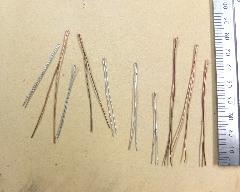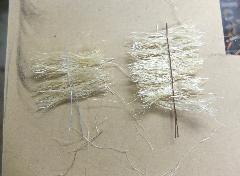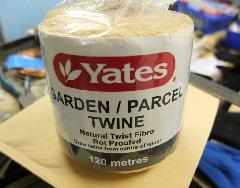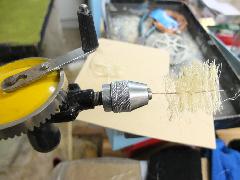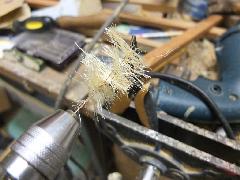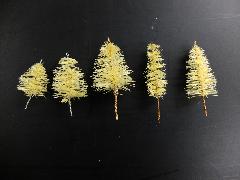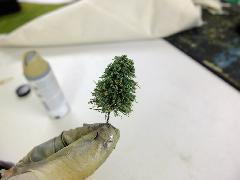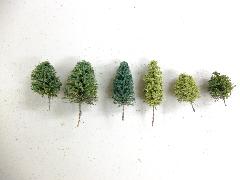Materials list
Thin wire x 2-3 thicknesses. For the twisted wire trees I use a 20metre roll of cheap thin wire I got from the hardware store. For the second kind of tree I used brass wire used for picture frames (you can unravel the wire).
Gardening twine. A twine used by gardeners
A tube of Sealer (caulk used for bathrooms and DIY. For this a coffee coloured caulk was used as it saves a lot of hassle painting it.
Dark brown and light brown spray cans. I use a chocolate brown and sand grey colours. You could use an airbrush instead.
Brown, cream and grey paint for drybrushing the trunk and branches
Flock different ypes of fine foam flock for the foliage (I use Woodlands scenics and Humbrol)
Scissors.
Drill. I use a hand drill (egg beater type) or you can use a electric drill. I find I have more control with the hand drill and I over wound a few trees using a power drill
PVA Glue
A pair of Pliers

